.

The George Washington Bridge, New York City, in heavy smog. View toward the New Jersey side of the Hudson River: photo by Chester Higgins, May 1973
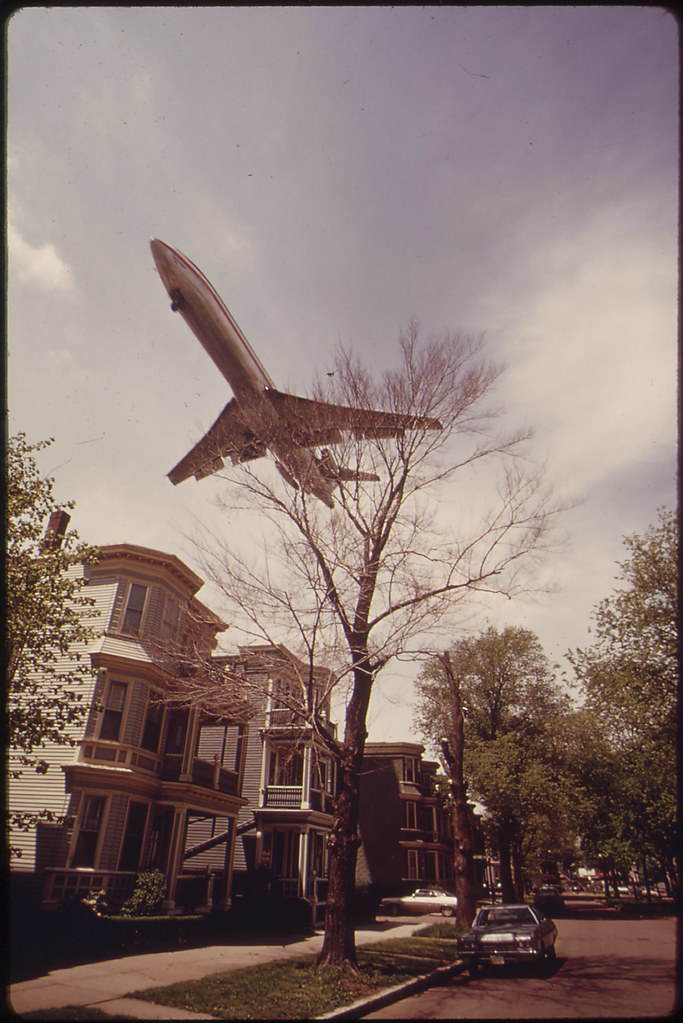
Jet zooms over southwestern side of Neptune Road, East Boston, Massachusetts: photo by Michael Philip Manheim, May 1973
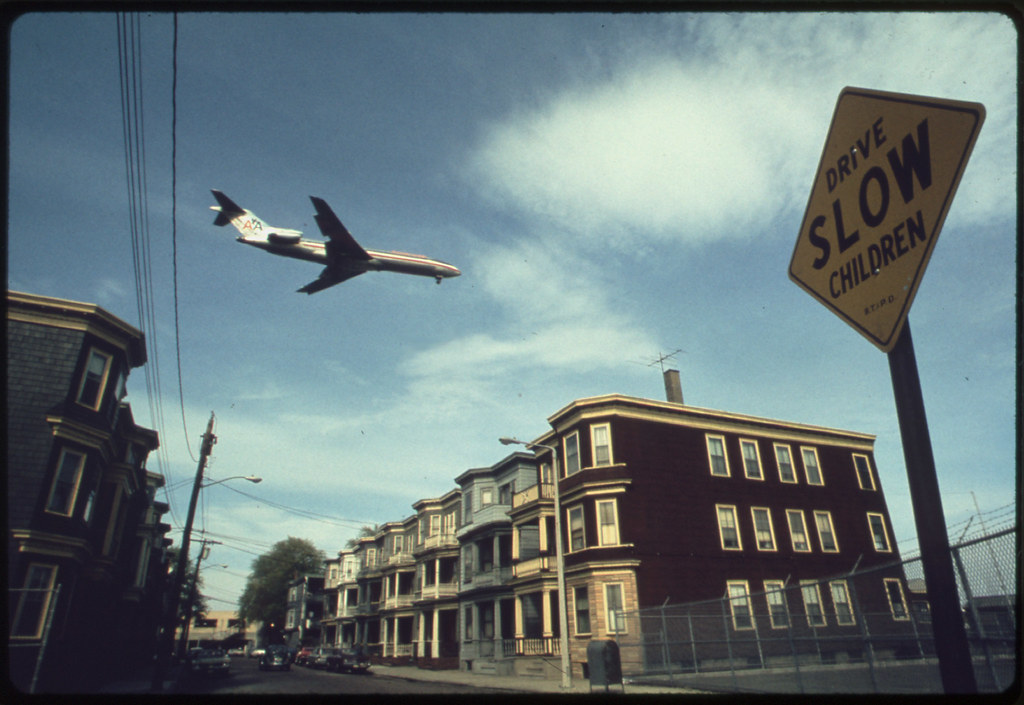
Approaching Logan Airport, East Boston, Massachusetts: photo by Michael Philip Manheim, May 1973
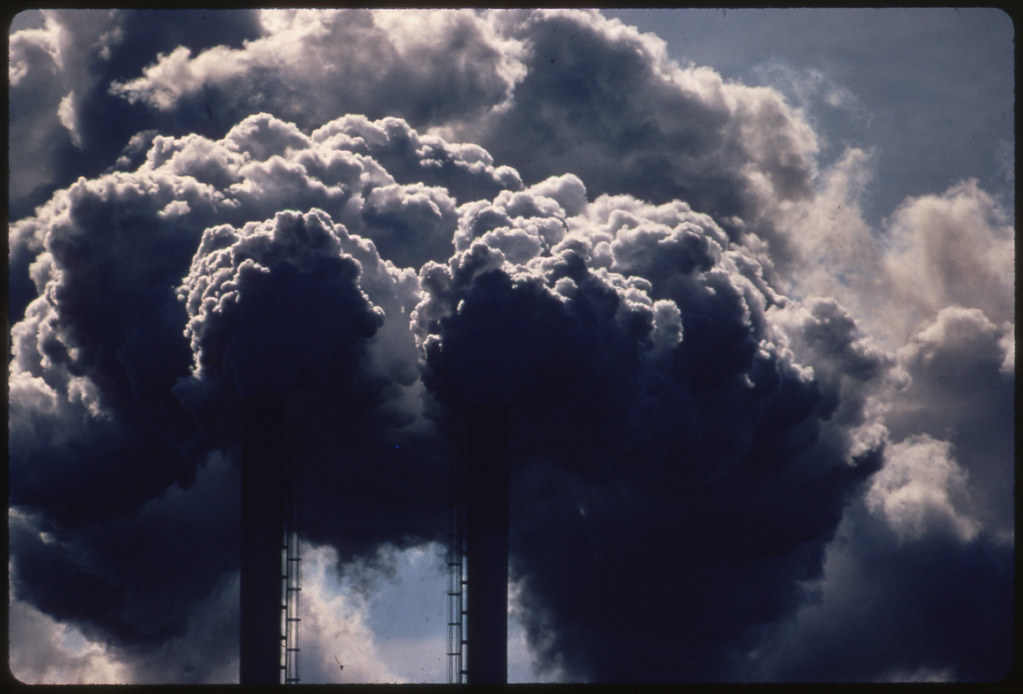
Burning discarded automobile batteries, Houston, Texas: photo by Marc St. Gil, August 1972

Interior of graffiti-marked subway car, New York City: photo by Erik Calonius, May 1973
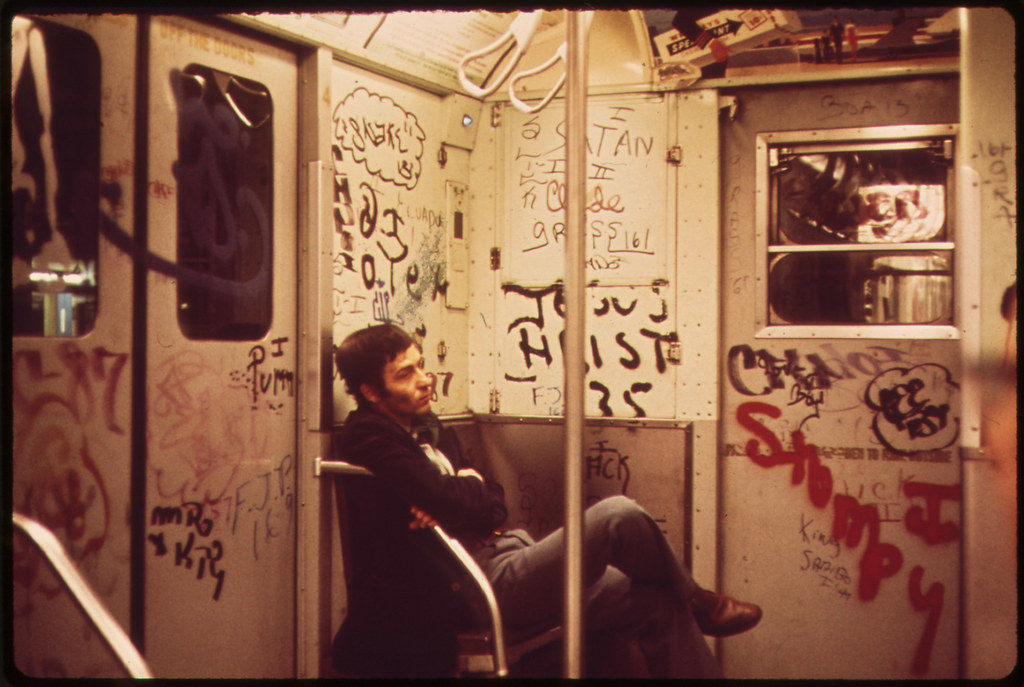
Subway car, New York City: photo by Erik Calonius, May 1973

Movie theatre, Berlin, New Hampshire: photo by Charles Steinhacker, June 1973
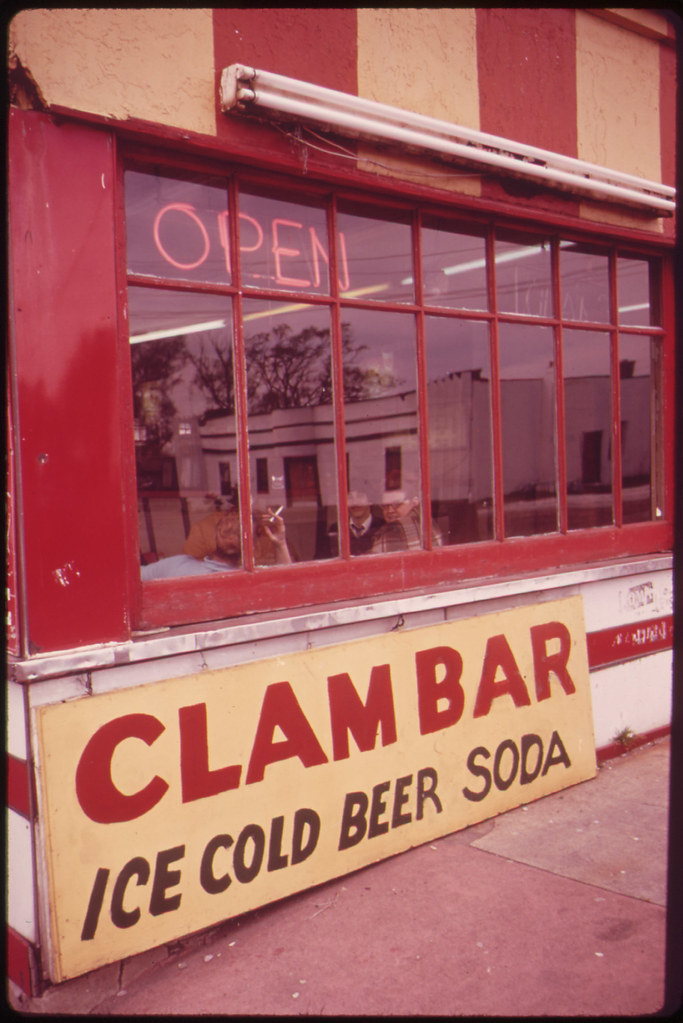
Snack bar in summer community of Broad Channel on Jamaica Bay, Queens, New York. Bay clams are the specialty of the house: photo by Arthur Tress, May 1973

Abandoned car in Jamaica Bay, Inwood, New York: photo by Arthur Tress, June 1973
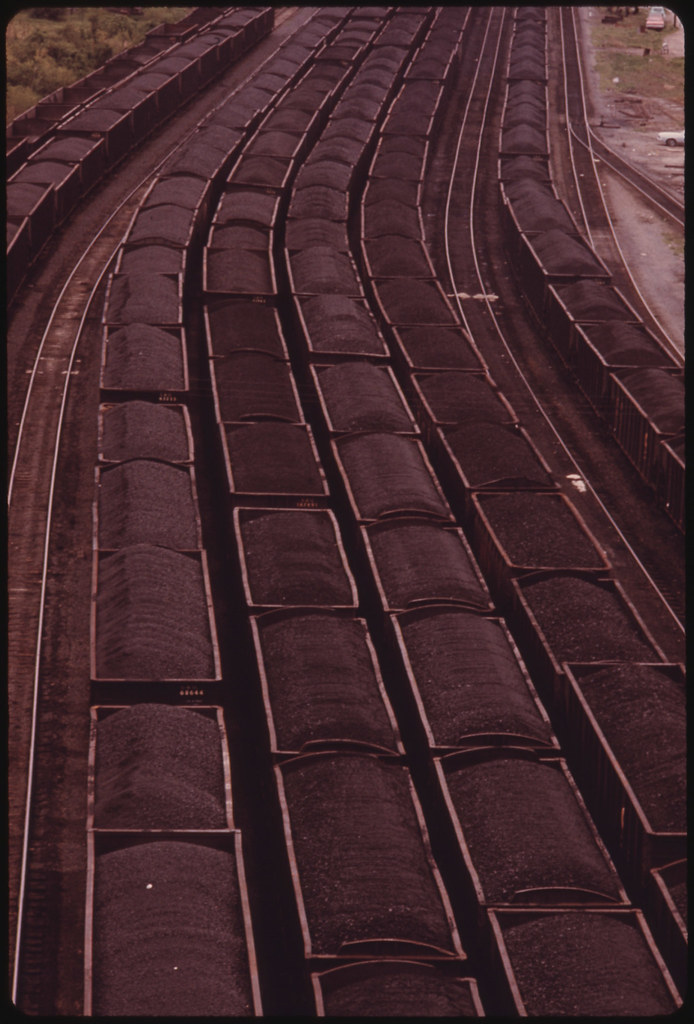
Loaded coal cars sit in the rail yards at Danville, West Virginia, near Charleston, awaiting shipment to customers. It is one of the largest transshipment points for coal in the world. A constant stream of rail cars is moved in and out of the small town: photo by Jack Corn, April 1974
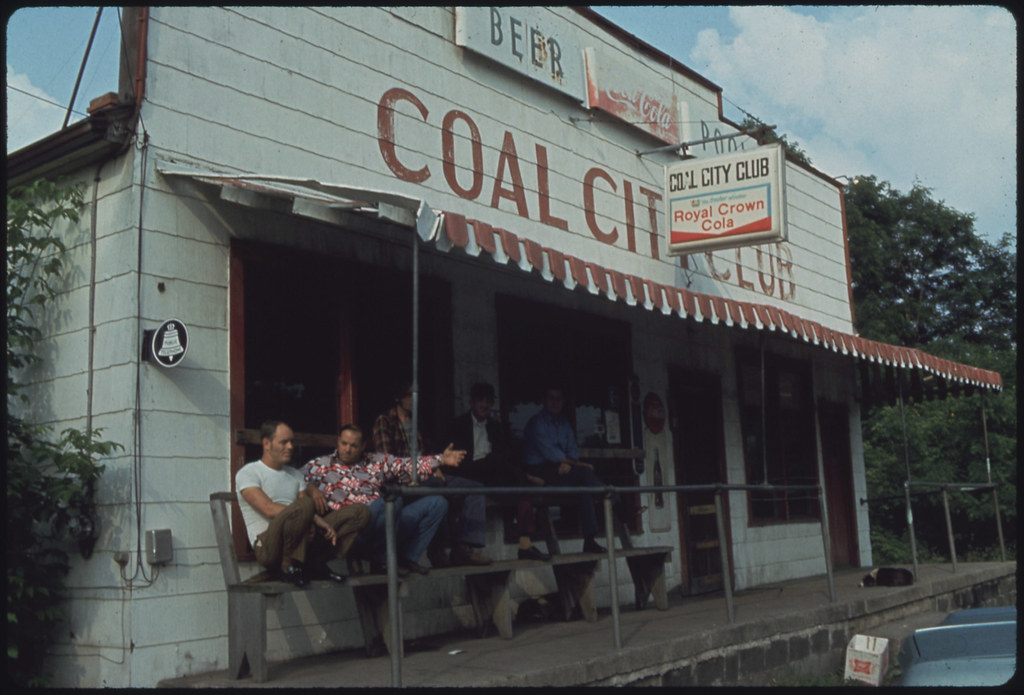
Coal City Club in Coal City, West Virginia, a part of Beckley. All of the men are coal miners. Note that some of them are "hunkering down" rather than sitting. This Is a familiar stance to all miners who use this posture in the mine shafts which have low ceilings: photo by Jack Corn, June 1974
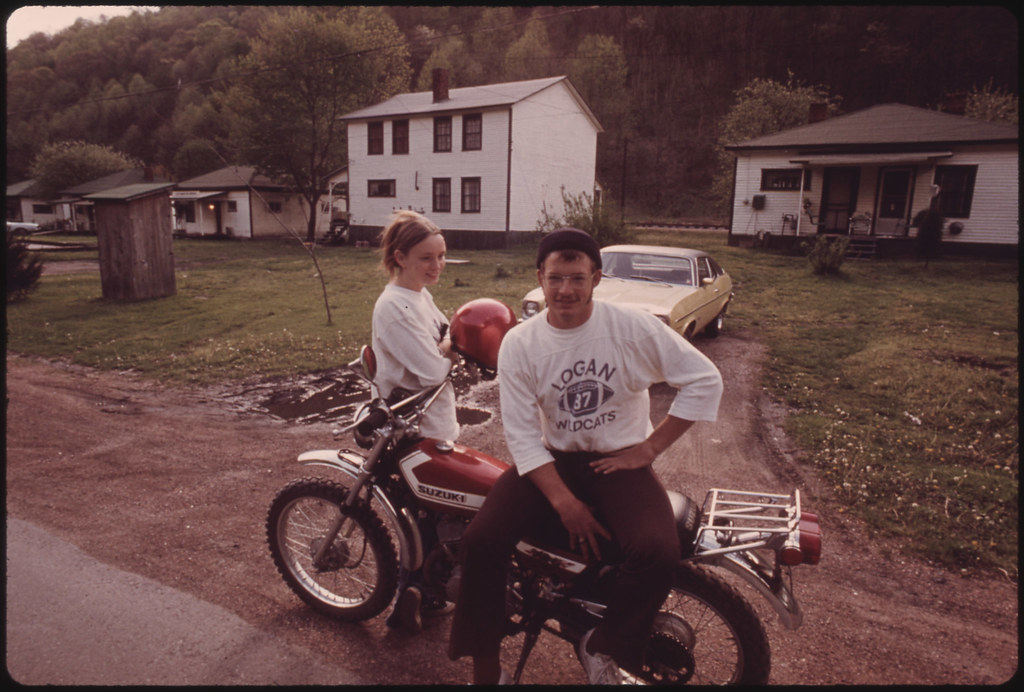
David Shanklin, 19, lives in a coal company town near Sunbright, West Virginia, and graduated from Logan County High School. His girlfriend, Janet Edwards, 17, still attends high school in Logan. David's father was killed in the mines in 1954 by a roof fall and he wants to be a miner, but his mother doesn't want him to. The youth has a brother working in the mines. Notice the out houses in front of the homes: photo by Jack Corn, April 1974

Mary Workman of Steubenvile, Ohio holds a jar of undrinkable water that comes from her well. She has filed a damage suit against the Hanna Coal Company. She has to transport water from a well many miles away. Although the coal company owns all the land around her, and many roads are closed, she refuses to sell: photo by Erik Calonius, October 1973
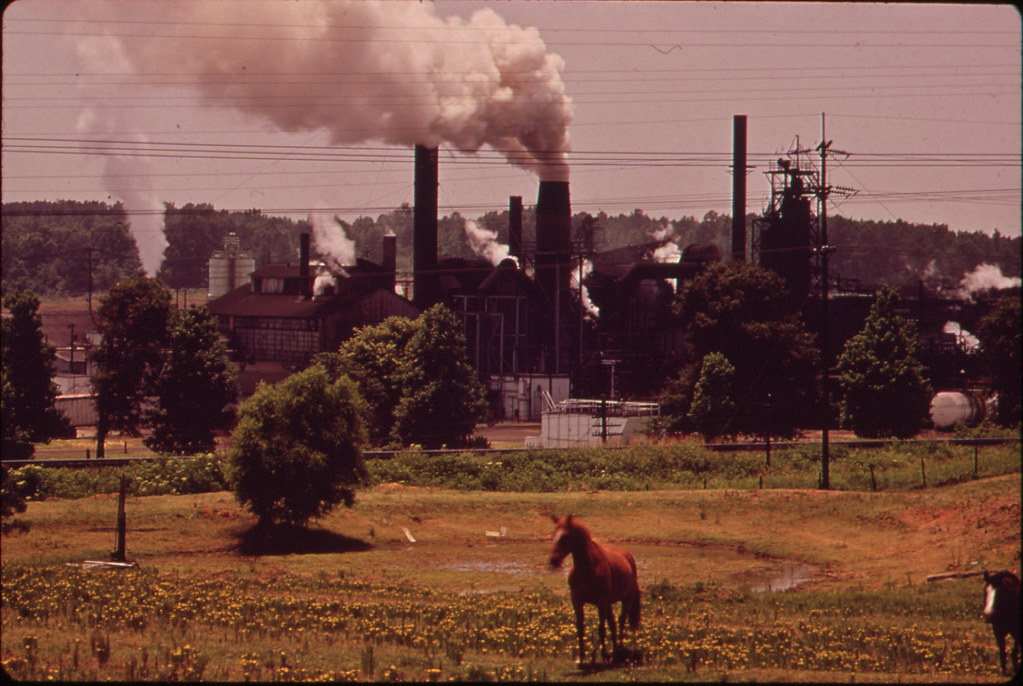
The Atlas Chemical Company belches smoke across pasture land in foreground, Marshall, Texas. The plant Is referred to as "Old Darky" in the community because black soot from the plant covers everything near-by. One farmer claims he lost several cows due to soot and chemicals from Atlas: photo by Marc St. Gil, June 1972
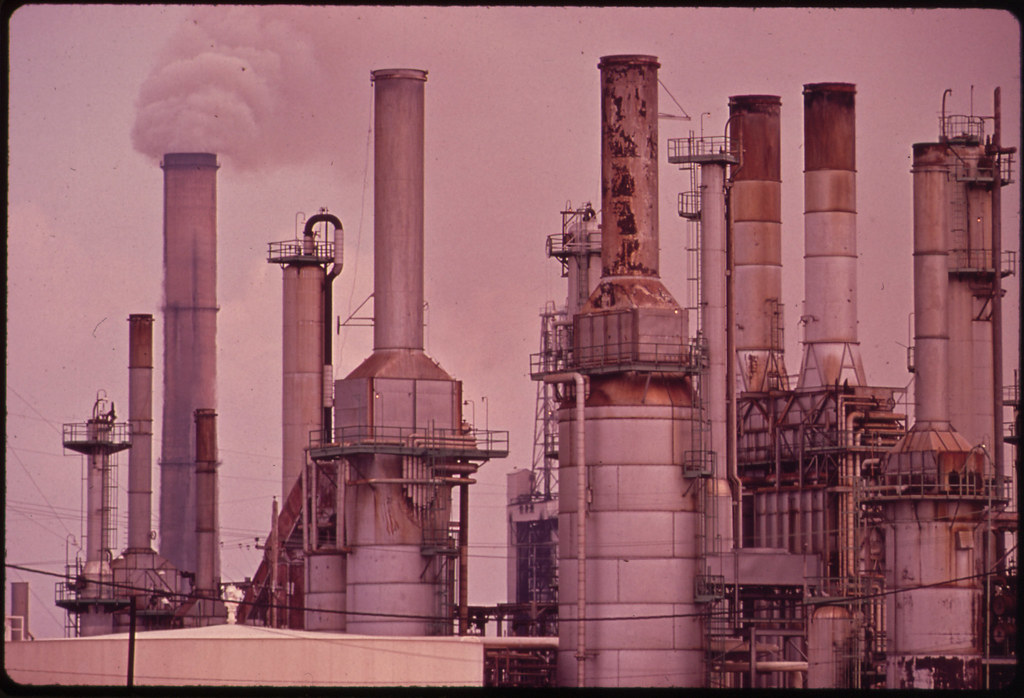
Smokestacks of chemical plant, Corpus Christi, Texas: photo by Marc St. Gil, November 1972

Sunset over Olin-Mathieson Plant, Lake Charles, Louisiana: photo by Marc St. Gil, June 1972

Downtown parking Lot, Cincinnati, Ohio: photo by Tom Hubbard, August 1973

Caribou trot across the tundra near Prudhoe Bay, where the Trans-Alaska oil pipeline will start: photo by Dennis Cowals, August 1973
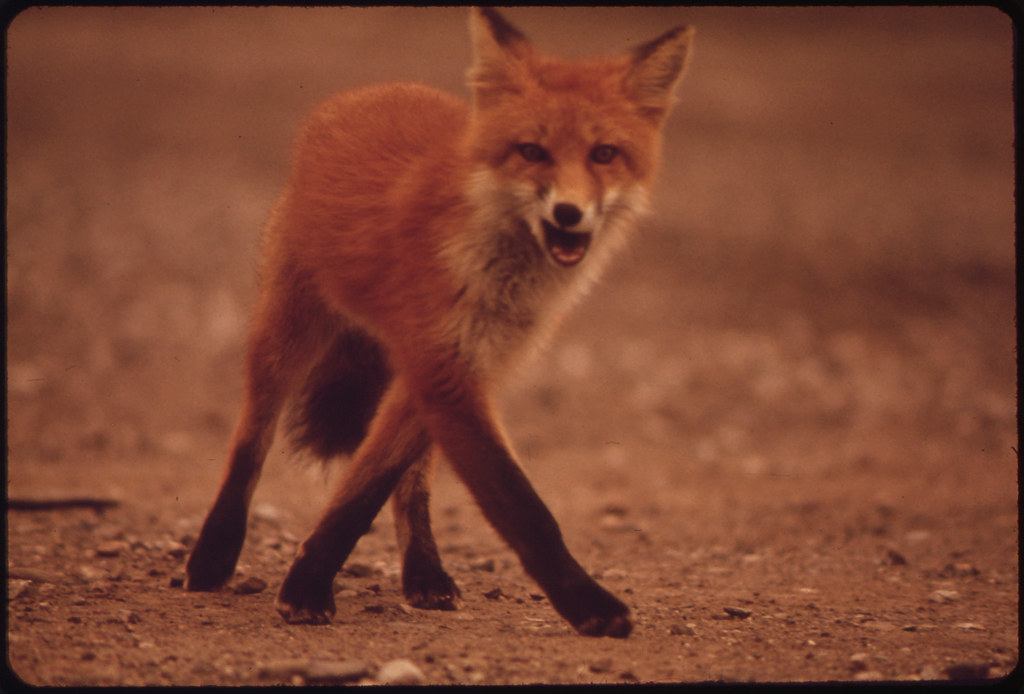
A young female fox near Galbraith Lake Camp, along the planned route of the Trans-Alaska oil pipeline: photo by Dennis Cowals, August 1973

Day's work done, the Parka Squirrel stands on the bank and surveys its domain, with Franklin Bluffs in background, along the planned route of the Trans-Alaska oil pipeline: photo by Dennis Cowals, August 1973
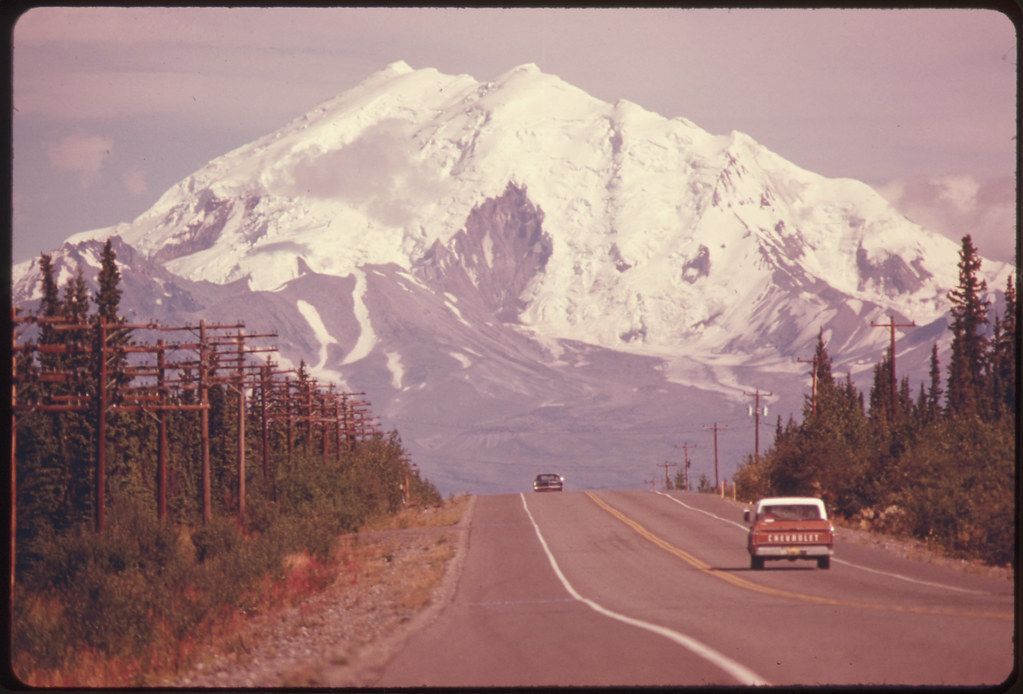
View east along Glen Highway toward Mount Drum (elevation 12,002 Feet) and intersection of road and Trans-Alaska pipeline. The 48-inch diameter pipeline will cross the roadway between the two vehicles. The exact point Is marked by a pair of wooden stakes along the right shoulder. Mile 673, Trans-Alaska pipeline route: photo by Dennis Cowals, August 1974

Recreational development of Lake Travis, Travis County, Texas: photo by Bill Reaves, c. 1972

Lake Lyndon Johnson, Travis County, Texas: photo by Bill Reaves, c. 1972
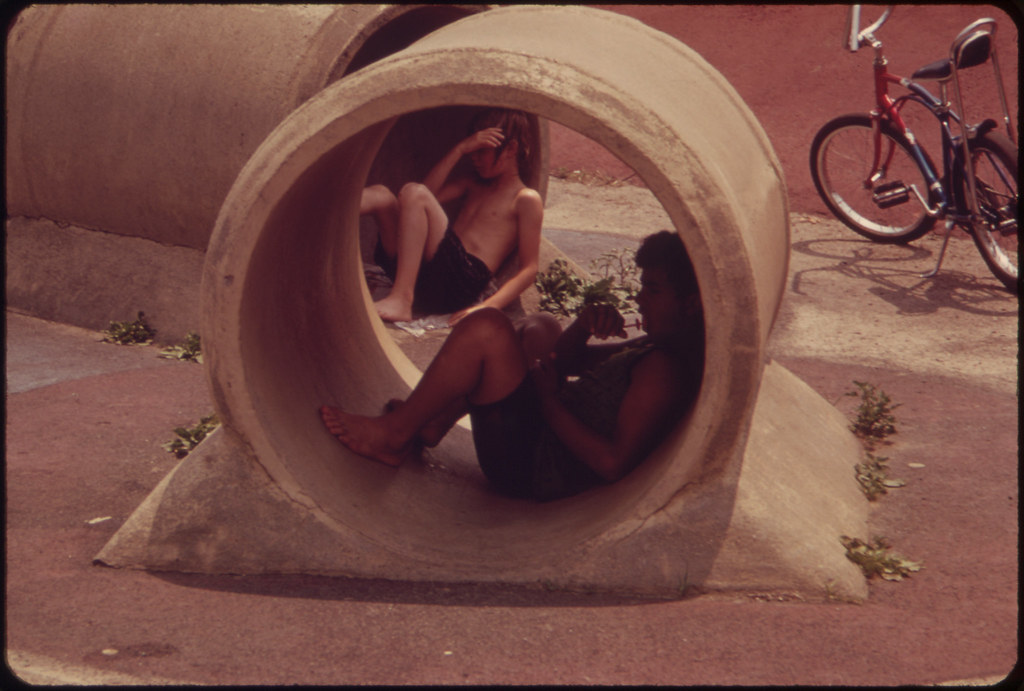
Public playground on the Charles River, near Soldiers Field Road, Boston, Massachusetts: photo by Ernst Halberstadt, June 1973

Wool mill in City Mills, one of thirty-five manufacturing towns along the eighty-mile Charles River, Massachusetts: photo by Ernst Halberstadt, June 1973
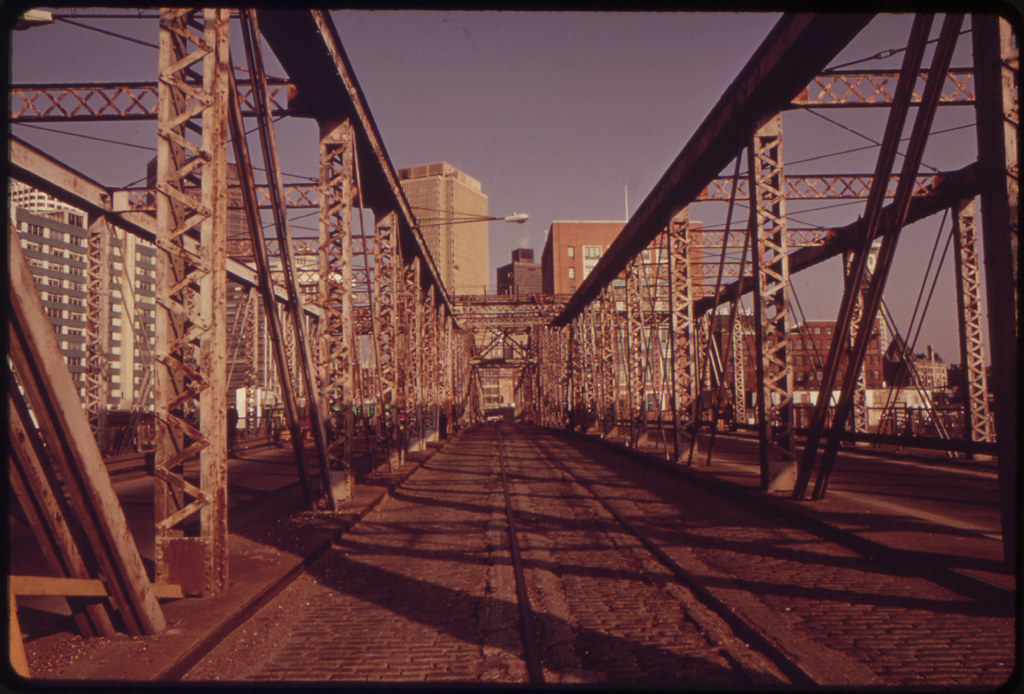
Old bridge on Northern Avenue, Boston: photo by Ernst Halberstadt, May 1973
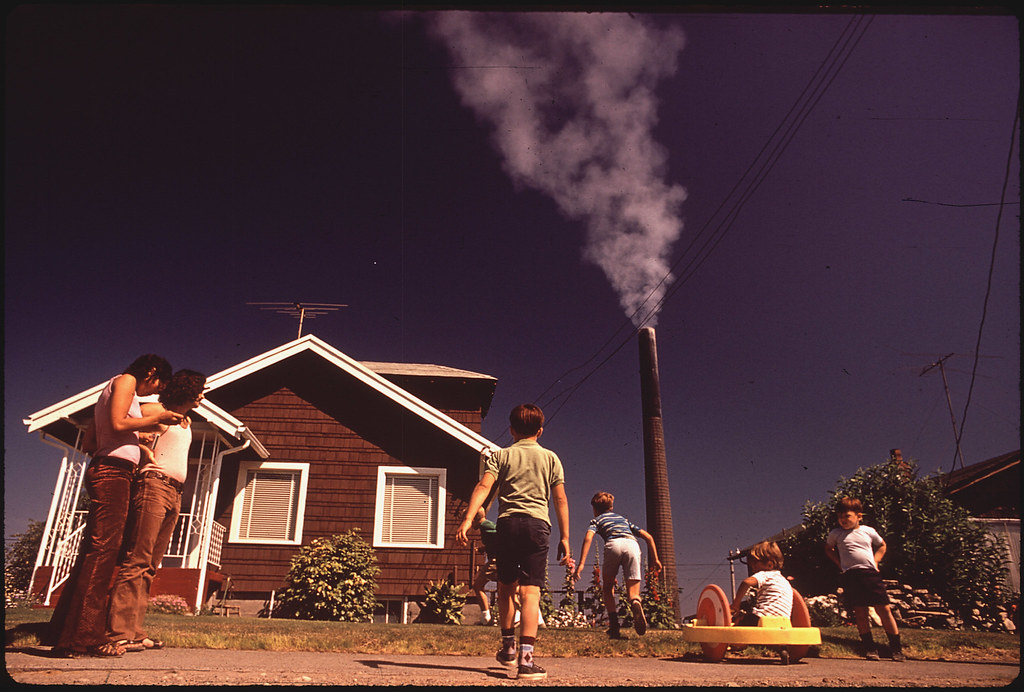
Children play in yard of Ruston, Washington home, while Tacoma Smelter stack showers area with arsenic and lead residue: photo by Gene Daniels, August 1972
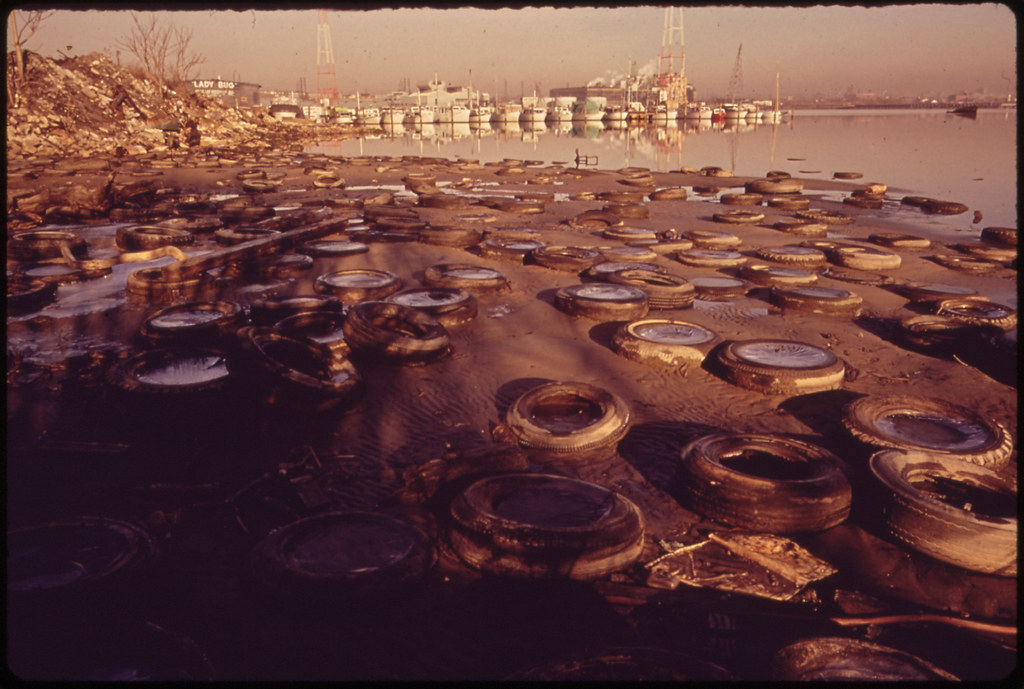
Trash and old tires litter the shore at the Middle Branch of Baltimore Harbor: photo by Jim Pickerell, January 1973
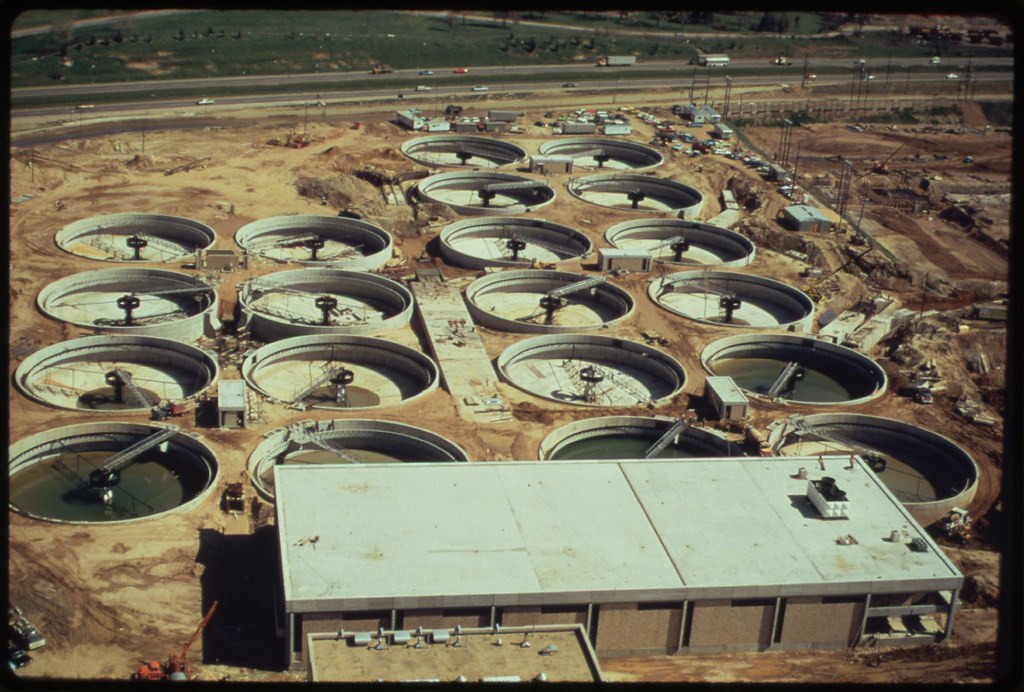
Aeration tanks at the Blue Plains sewage treatment plant on the Anacostia River, Washington, D.C. More tanks are being added to meet needs of ever-expanding suburbs: photo by Dick Swanson, April 1973
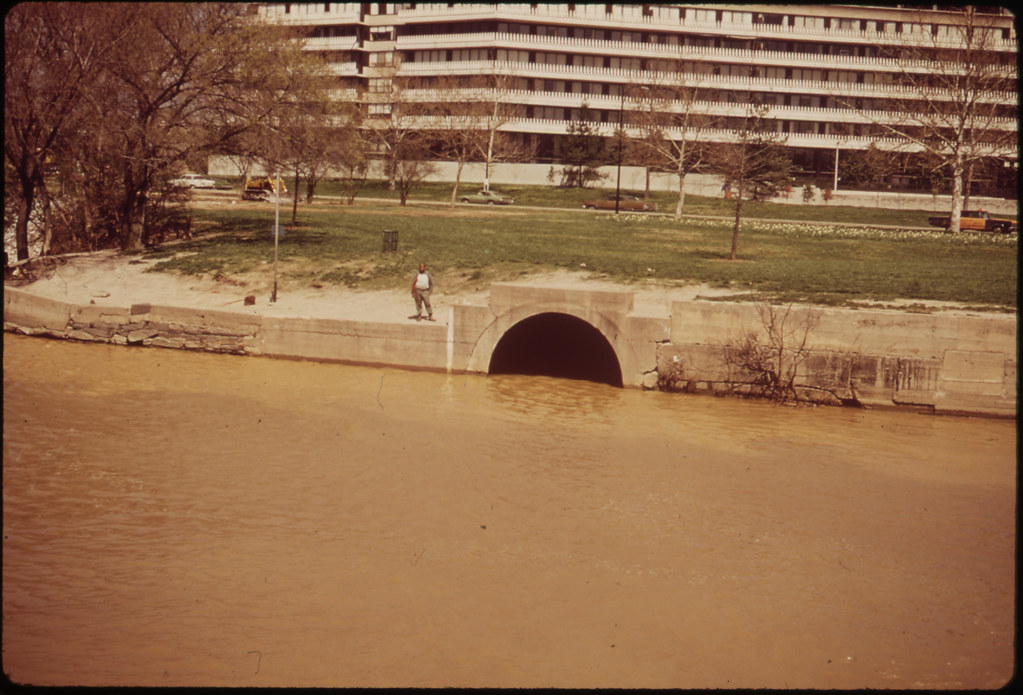
The Georgetown Gap, through which raw sewage flows into the Potomac River, Washington, D.C. Watergate complex in the rear: photo by John Neubauer, April 1973

Illegal dumping area off the New Jersey Turnpike, facing Manhattan across the Hudson River. Nearby, to the South, Is the landfill area of the proposed Liberty State Park: photo by Gary Miller, March 1973

Morning rush hour traffic on H-1 freeway approaching Honolulu from the west. Commuters come from such fast growing areas as Pearl City and Mililani town: photo by Charles O'Rear, October 1973
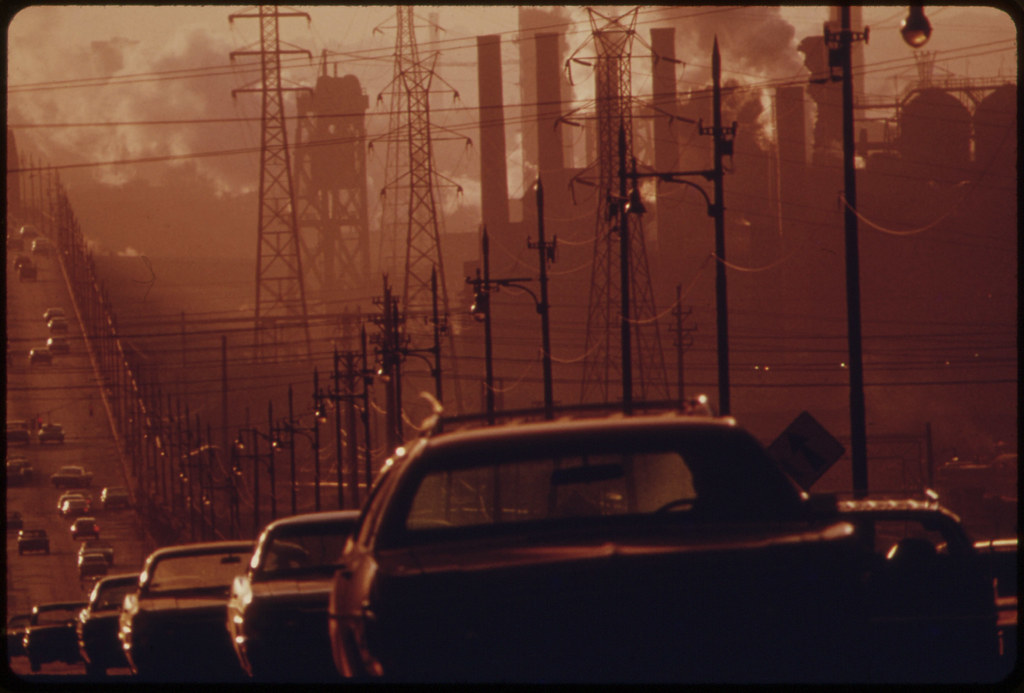
Clark
Avenue and Clark Avenue Bridge, looking East from West 13th Street, are
obscured by smoke from heavy industry, Cleveland, Ohio: photo by Frank J. Aleksandrowicz, July 1973

Residents take part in organized daily exercises in one of the public pools at Century Village retirement community, West Palm Beach, Florida: photo by Flip Schulke, c. 1975

Visual pollution along Interstate 24, South Pittsburg, Tennessee: photo by William Strode, September 1972
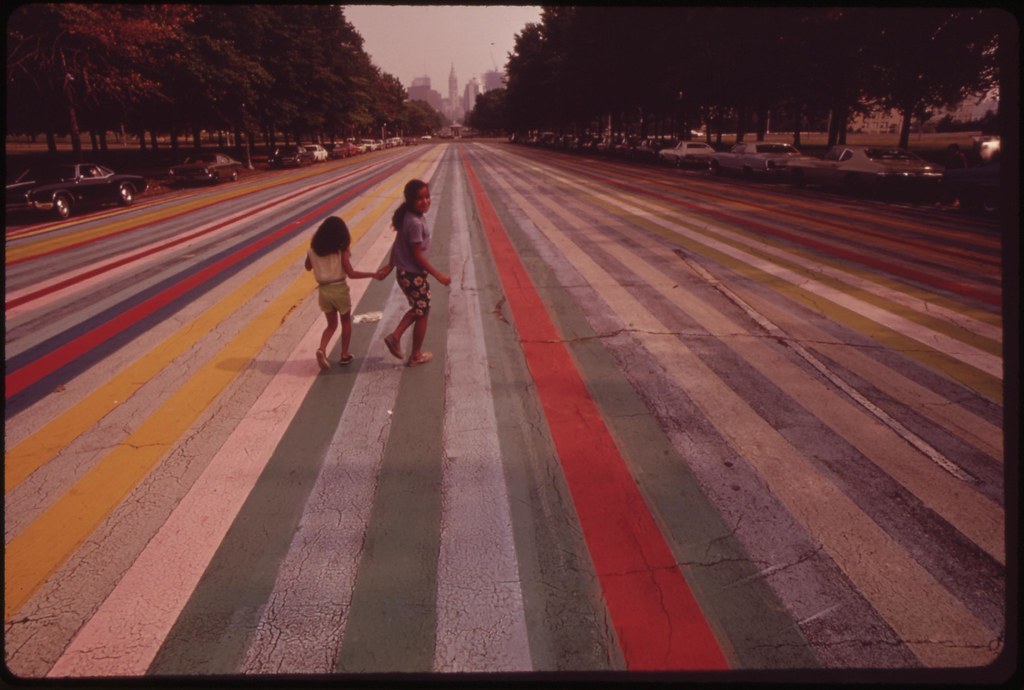
Crossing the painted road which extends east from the Philadelphia Museum of Art: photo by Dick Swanson, August 1973
All photos from the DOCUMERICA series, an Environmental Protection Agency program to photographically document subjects of environmental concern, compiled
1972-1977 (U.S. National Archives)



7 comments:
Dear Tom: That last image, which I recognized immediately, comes from the Washington stripe painter Gene Davis. The first book I ever edited at the Smithsonian was an exhibition-related title on his once-famous paintings. See http://www.magicalurbanism.com/archives/3184
Many thanks, tpw.
Here's Terry's link made clickable:
Gene Davis Paints a Street
Wonderful post, TC. As always, you lay it out with no recourse to sentiment or false hope. Moving from the cars to the Caribou is a shock.
Thanks for the link, Terry. I hadn't heard of Gene Davis.
Tom,
"Subjects of environmental concern" to put it mildly -- and yes, as Wooden Boy notes, to go from the cars, e.g., that old VW in Jamaica Bay, to caribou, fox & squirrel is something of a shock.
12.27
light coming into sky above still black
ridge, golden-crowned sparrow’s oh dear
in foreground, wave sounding in channel
see repetition of materials,
note pen and graphite
which is in itself, a measure
open to itself, as is
grey of rain cloud above green of ridge,
shadowed white gulls on tip of sandspit
These are deeply disturbing images of a progressive disease. The picture that gets me the most— even more than those of the poor homo saps, we human denizens of a vanishing world—is that of the young fox snarling at encroaching ‘progress’. Columbus and that crowd stumbled upon what to them was a whole continent of ‘unimproved property’ just waiting to be ‘developed’. Here are the results. This is structural violence, as relentless as it is inescapable. Welcome to Grind City.
Goodbye forever Yellow brick road.
"...the young fox snarling at encroaching ‘progress’. Columbus and that crowd stumbled upon what to them was a whole continent of ‘unimproved property’ just waiting to be ‘developed’. Here are the results. This is structural violence, as relentless as it is inescapable."
Yes, and this remarkable EPA series involving some seventy top notch photographers from the 1970s documents the nation teetering on the brink of the wholesale destruction -- "development"-- of that continent.
On the environmental front it's been downhill ever since, mostly well out of sight of government-funded public-interest lenses and hard, careful trained eyes looking through them to assess the damage -- both in progress, and imminent, as in the case of the fox and caribou on the oil pipeline route.
The NARA archive holds a legacy of over 15,000 of the original 35mm color slides and black and white negatives and prints from this environmental field survey. Nothing like it had happened in the 35 years since the FSA project (on which it was modeled, with a comparable liberty for the photographers to define the range and scope of the mission as they worked). And nothing like it would ever happen again.
These days the funding does not go to tough, reality-check documentary projects. But a lot of pictures could be taken with the money it costs to build one military drone.
The courage to stare the wreckage in the eye, now that would be another matter, pricetag issues notwithstanding.
Post a Comment